CV - 합성곱 신경망(CNN)
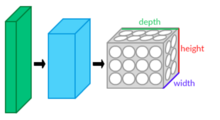
CV - 합성곱 신경망(CNN)
컴퓨터 비전 : 합성곱 신경망(Convolutional Neural Network, CNN)
- AI를 공부하면서 내가 좋아하는 NLP쪽만 공부하다보니 CV분야의 학습이 부족한것 같음
- 컴퓨터 비전 분야를 체계적으로 정리해 보자
합성곱 신경망(Convolutional Neural Network, CNN)의 구조
-
합성곱 신경망은
특징 추출 부분,분류를 위한 신경망두 가지 구조로 구성
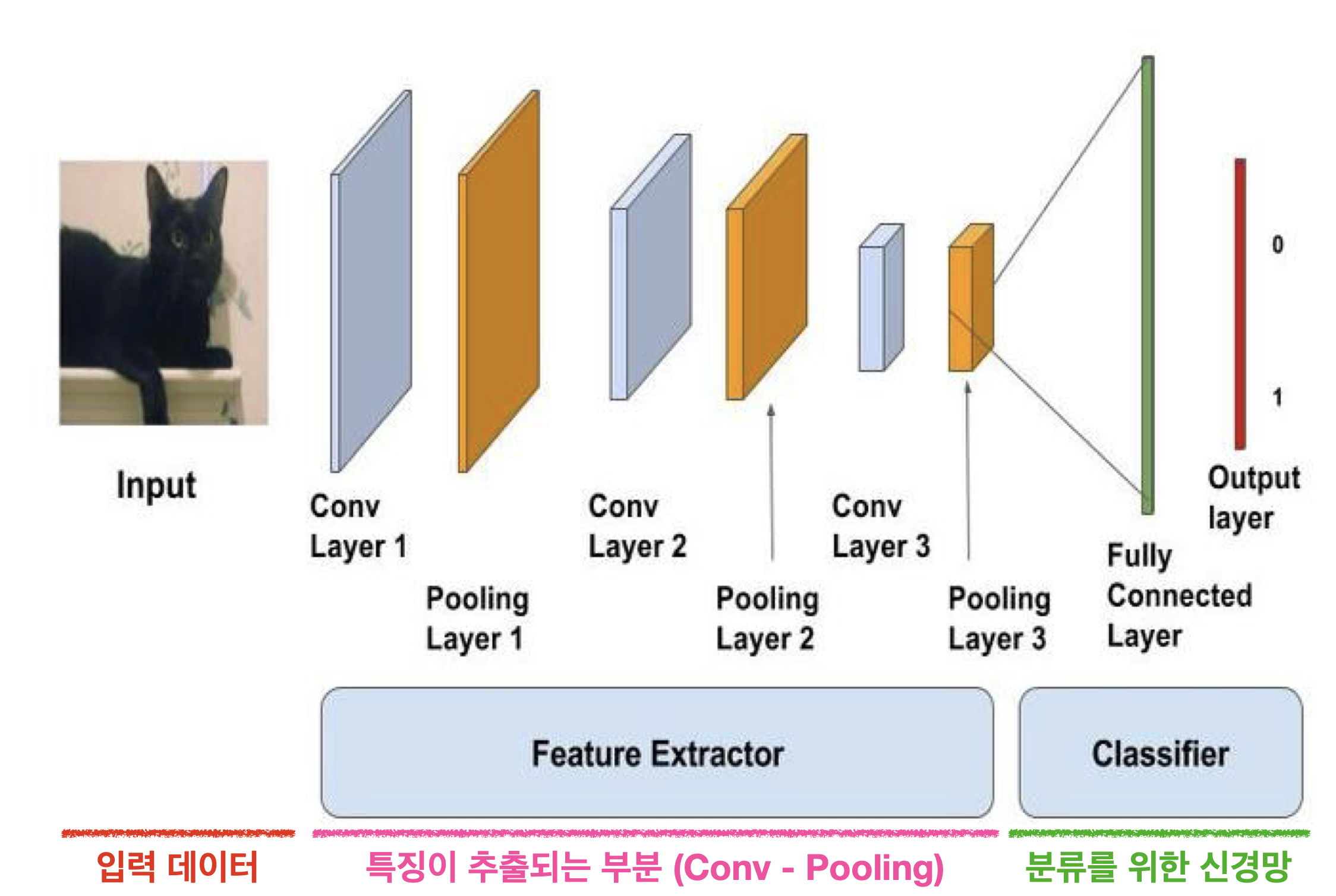
- 특징 추출 부분
합성곱층(Convolution Layer)과풀링층(Pooling Layer)으로 구성- 합성곱 신경망은 합성곱 층의
Filter의 가중치를 학습
- 분류를 위한 신경망
- 일반적 인공신경망의
다층 퍼셉트론신경망으로 구성하면 됨 완전 연결 신경망(Fully Connected Layer)이라고 불림
- 일반적 인공신경망의
특징 추출 부분
합성곱(Convolution Layer)
- 합성곱 층에서는
합성곱 필터(Convolution Filter)가 슬라이딩(Sliding)하며 이미지 부분부분의특징을 추출
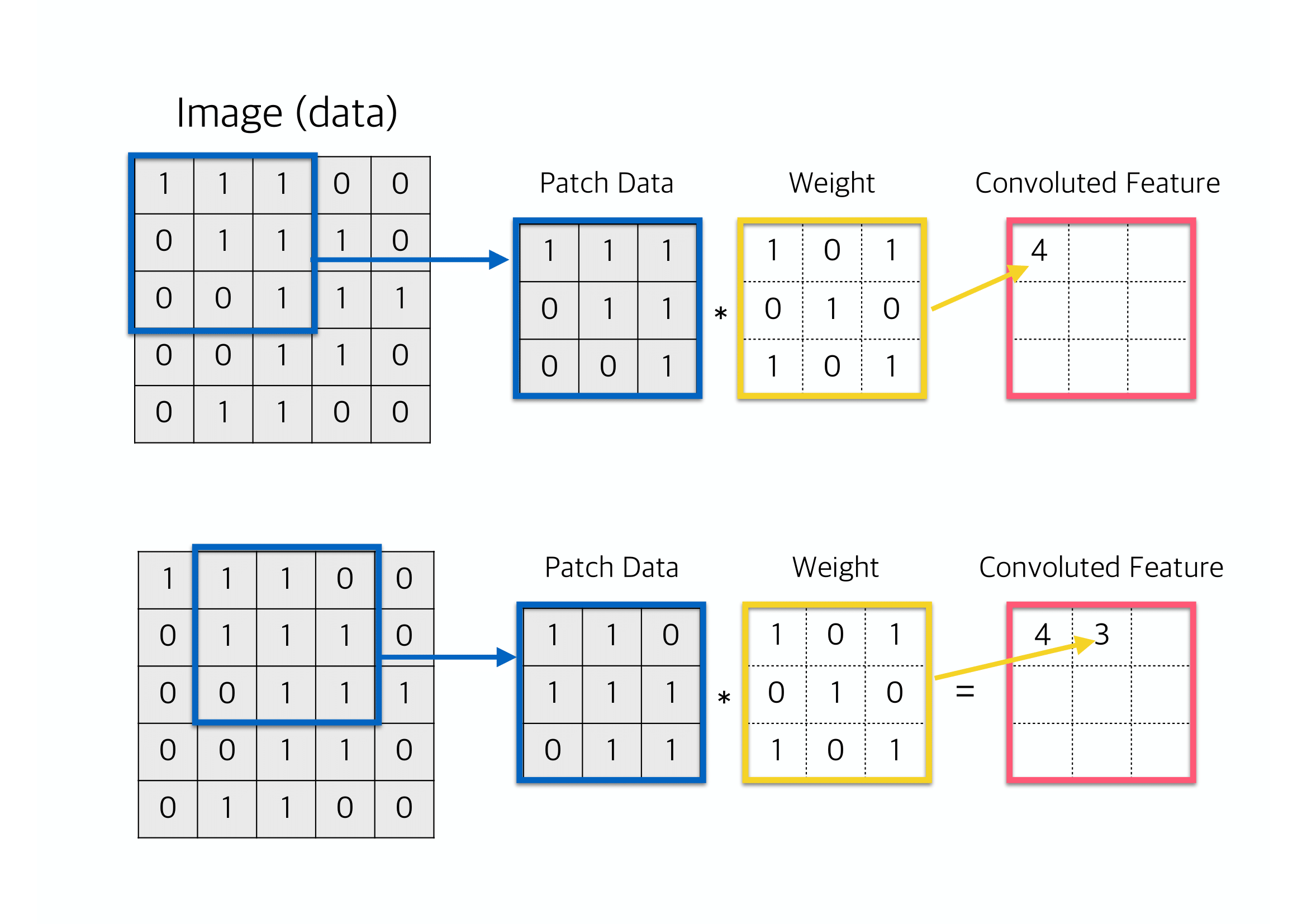
패딩(Padding)
- 연산되어 나오는 Output, 즉 Feature map 의 크기를 조절하고 실제 이미지 값을 충분히 활용하기 위해, 이미지 외부를 특정한 값으로 둘러싸는 방법
- 주로 ‘0’으로 둘러싸주는 제로패딩(Zero-Padding)이 가장 많이 사용됨
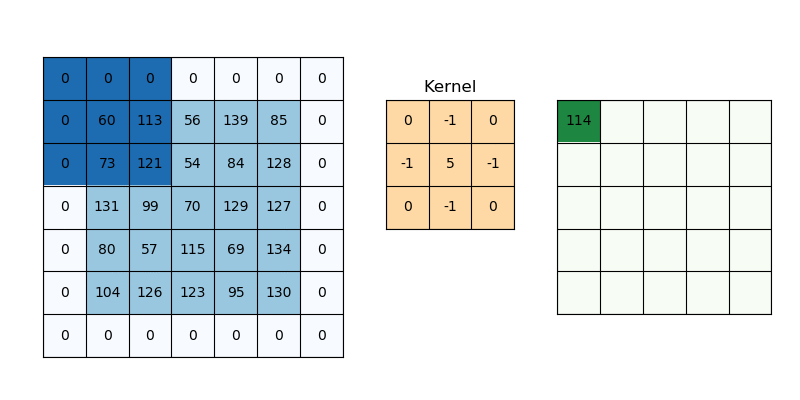
스트라이드(Stride)
- 슬라이딩(Sliding)시에 몇 칸 씩 건너뛸지 결정
- 필터가 한 칸씩 슬라이딩하려면
Stride=1로 설정 - 두 칸씩 슬라이딩하려면
Stride=2로 설정
- 필터가 한 칸씩 슬라이딩하려면
- 필터 크기(Filter size), 패딩(Padding), 스트라이드(Stride)에 따른 Feature map 크기 변화
$N_{\text{out}} = \bigg[\frac{N_{\text{in}} + 2p - k}{s}\bigg] + 1$ - $N_{\text{in}}$ : 입력되는 이미지의 크기(=피처 수)
- $N_{\text{out}}$ : 출력되는 이미지의 크기(=피처 수)
- $k$ : 합성곱에 사용되는 커널(=필터)의 크기
- $p$ : 합성곱에 적용한 패딩 값
- $s$ : 합성곱에 적용한 스트라이드 값
- $N_{\text{in}}$ : 입력되는 이미지의 크기(=피처 수)
풀링(Pooling)
- 풀링(Pooling) : 가로, 세로 크기를 줄이고, 일정 공간을 대표하는 특징을 추출
- 최대 풀링(Max pooling)
- 정해진 범위 내에서 가장 큰 값을 꺼내오는 방식
- 평균 풀링(Average pooling)
- 정해진 범위 내에 있는 모든 요소의 평균을 가져오는 방식
분류를 위한 신경망
- 분류를 위한 신경망은 일반적인 다층 퍼셉트론 신경망으로 구성
- 분류를 위한 완전 연결 신경망(Fully Connected Layer)은 풀어야 하는 문제에 따라서, 곧 Class의 개수에 따라서(2개, 10개 분류 등) 출력층을 설계해야 함
합성곱 신경망 예제 : Cifar10
- 예제 환경
Python : 3.10.11 Tensorflow : 2.10.1 TF GPU : True - 필요한 라이브러리 불러오기
# Library Import import tensorflow as tf from tensorflow import keras from keras.models import Model, Sequential from keras.layers import Dense, Conv2D, MaxPooling2D, Flatten from keras.applications.vgg16 import VGG16 from keras.applications.mobilenet_v2 import MobileNetV2 from keras.applications.resnet_v2 import ResNet50V2 from sklearn.model_selection import train_test_split import numpy as np import matplotlib.pyplot as plt - 각종 파라미터 설정
CONFIG = dict( # Dataset test_size = .2, idx = 200, label_names = ['Airplane', 'Automobile', 'Bird', 'Cat', 'Deer', 'Dog', 'Frog', 'Horse', 'Ship', 'Truck'], # Model model = None, history = None, optimizer = 'adam', loss = 'sparse_categorical_crossentropy', metrics = ['accuracy'], batch_size = 128, epochs = 20, input_shape = (32, 32, 3), shape = (None, 32, 32, 3), # Misc seed = 83, save_img = 'D:/이미지 저장 경로', ) np.random.seed(CONFIG['seed']) tf.random.set_seed(CONFIG['seed'])
데이터 전처리
- CIFAR-10 dataset
- 10개의 클래스
- airplane, automobile, bird, cat, deer, dog, frog, horse, ship, truck
- 클래스당 약 6,000개 이미지
- 32x32 사이즈, 컬러 이미지
- 60,000개
- 훈련용 50,000개
- 평가용 10,000개
- 10개의 클래스
- 데이터 불러오기
(X_train, y_train), (X_test, y_test) = keras.datasets.cifar10.load_data() # Normalization X_train = X_train.astype('float32') / 255. X_test = X_test.astype('float32') / 255. # Validation Data Split X_train, X_val, y_train, y_val = train_test_split(X_train, y_train, test_size=CONFIG['test_size'], random_state=CONFIG['seed']) - 일부 이미지 확인
fig, ax = plt.subplots(figsize=(10,10)) for i, val in enumerate(range(CONFIG['idx']-10,CONFIG['idx']+10)): plt.subplot(5,5,i+1) plt.xticks([]) plt.yticks([]) plt.grid(False) plt.imshow(X_train[val]) plt.xlabel(CONFIG['label_names'][y_train[val][0]]) plt.show() fig.savefig(CONFIG['save_img']+'cifar_10_images.png', dpi=60, bbox_inches='tight')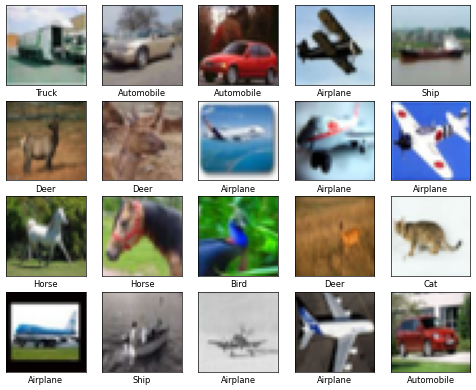
Sequential, Functional API, Sub Classing 비교
- 기본적인 합성곱 신경망 모델을 Sequential, Functional API, Sub Classing 방식으로 만들어 비교해보자
🩺 의사코드 💉
- 인풋 = shape(32, 32, 3) 이미지
- shape : 가로, 세로, RGB
- 합성곱 : Conv2D(필터=32, 필터사이즈=(3,3), 패딩=일정하게, 활성함수=렐루)
- 풀링 : MaxPooling(풀링사이즈=(2,2))
- 합성곱 : Conv2D(필터=64, 필터사이즈=(3,3), 패딩=일정하게, 활성함수=렐루)
- 풀링 : MaxPooling(풀링사이즈=(2,2))
- 합성곱 : Conv2D(필터=64, 필터사이즈=(3,3), 패딩=일정하게, 활성함수=렐루)
- shape(32, 32, 3) 3차원을 1차원으로 flatten
- 다층신경망 : Dense(노드=128, 활성함수=렐루)
- 출력 : Dense(출력=10, 활성함수=소프트맥스)
Sequential 방식의 합성곱 신경망
def get_cnn_seq(input_shape, classes):
model = Sequential(name='Sequential_Model')
model.add(Conv2D(32, (3, 3)
, padding='same'
, input_shape=input_shape
, activation='relu'))
model.add(MaxPooling2D(2, 2))
model.add(Conv2D(64, (3, 3)
, padding='same'
, activation='relu'))
model.add(MaxPooling2D(2, 2))
model.add(Conv2D(64, (3, 3)
, padding='same'
, activation='relu'))
model.add(Flatten())
model.add(Dense(128, activation='relu'))
model.add(Dense(classes, activation='softmax'))
return model
CONFIG['model'] = get_cnn_seq(CONFIG['input_shape'], len(CONFIG['label_names']))
print(CONFIG['model'].summary())
Model: "Sequential_Model"
_________________________________________________________________
Layer (type) Output Shape Param #
=================================================================
conv2d (Conv2D) (None, 32, 32, 32) 896
max_pooling2d (MaxPooling2D (None, 16, 16, 32) 0
)
conv2d_1 (Conv2D) (None, 16, 16, 64) 18496
max_pooling2d_1 (MaxPooling (None, 8, 8, 64) 0
2D)
conv2d_2 (Conv2D) (None, 8, 8, 64) 36928
flatten (Flatten) (None, 4096) 0
dense (Dense) (None, 128) 524416
dense_1 (Dense) (None, 10) 1290
=================================================================
Total params: 582,026
Trainable params: 582,026
Non-trainable params: 0
_________________________________________________________________
None
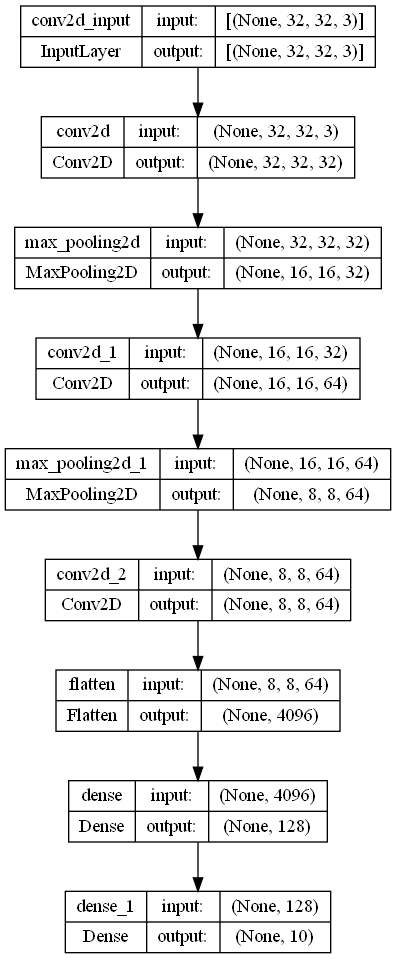
CONFIG['model'].compile(optimizer=CONFIG['optimizer'],
loss=CONFIG['loss'],
metrics=CONFIG['metrics'])
CONFIG['history'] = CONFIG['model'].fit(X_train, y_train,
batch_size=CONFIG['batch_size'],
validation_data=(X_val, y_val),
epochs=CONFIG['epochs'])
CONFIG['model'].evaluate(X_test, y_test)
# loss: 1.5397 - accuracy: 0.7020

Functional API 방식의 합성곱 신경망
def get_cnn_fnc(shape, classes):
inputs = keras.Input(shape=shape)
x = Conv2D(32, (3,3), padding='same', activation='relu')(inputs)
x = MaxPooling2D(2,2)(x)
x = Conv2D(64, (3,3), padding='same', activation='relu')(x)
x = MaxPooling2D(2,2)(x)
x = Conv2D(64, (3,3), padding='same', activation='relu')(x)
x = Flatten()(x)
x = Dense(128, activation='relu')(x)
outputs = Dense(classes, activation='softmax')(x)
model = keras.Model(inputs, outputs, name='Functional_Model')
return model
CONFIG['model'] = get_cnn_fnc(CONFIG['input_shape'], len(CONFIG['label_names']))
print(CONFIG['model'].summary())
Model: "Functional_Model"
_________________________________________________________________
Layer (type) Output Shape Param #
=================================================================
input_1 (InputLayer) [(None, 32, 32, 3)] 0
conv2d_3 (Conv2D) (None, 32, 32, 32) 896
max_pooling2d_2 (MaxPooling (None, 16, 16, 32) 0
2D)
conv2d_4 (Conv2D) (None, 16, 16, 64) 18496
max_pooling2d_3 (MaxPooling (None, 8, 8, 64) 0
2D)
conv2d_5 (Conv2D) (None, 8, 8, 64) 36928
flatten_1 (Flatten) (None, 4096) 0
dense_2 (Dense) (None, 128) 524416
dense_3 (Dense) (None, 10) 1290
=================================================================
Total params: 582,026
Trainable params: 582,026
Non-trainable params: 0
_________________________________________________________________
CONFIG['model'].compile(optimizer=CONFIG['optimizer'],
loss=CONFIG['loss'],
metrics=CONFIG['metrics'])
CONFIG['history'] = CONFIG['model'].fit(X_train, y_train,
batch_size=CONFIG['batch_size'],
validation_data=(X_val, y_val),
epochs=CONFIG['epochs'])
CONFIG['model'].evaluate(X_test, y_test)
# loss: 1.7000 - accuracy: 0.7008

Sub Classing 방식의 합성곱 신경망
class GetCnnCLS(Model):
def __init__(self, classes):
super(GetCnnCLS, self).__init__(name='Sub_Classing_Model')
self.conv1 = Conv2D(32, (3,3), padding='same', activation='relu')
self.pool1 = MaxPooling2D(2,2)
self.conv2 = Conv2D(64, (3,3), padding='same', activation='relu')
self.pool2 = MaxPooling2D(2,2)
self.conv3 = Conv2D(64, (3,3), padding='same', activation='relu')
self.flat = Flatten()
self.dense1 = Dense(128, activation='relu')
self.dense2 = Dense(classes, activation='softmax')
def call(self, inputs):
x = self.conv1(inputs)
x = self.pool1(x)
x = self.conv2(x)
x = self.pool2(x)
x = self.conv3(x)
x = self.flat(x)
x = self.dense1(x)
outputs = self.dense2(x)
return outputs
CONFIG['model'] = GetCnnCLS(len(CONFIG['label_names']))
CONFIG['model'].build(CONFIG['shape'])
print(CONFIG['model'].summary())
Model: "Sub_Classing_Model"
_________________________________________________________________
Layer (type) Output Shape Param #
=================================================================
conv2d_6 (Conv2D) multiple 896
max_pooling2d_4 (MaxPooling multiple 0
2D)
conv2d_7 (Conv2D) multiple 18496
max_pooling2d_5 (MaxPooling multiple 0
2D)
conv2d_8 (Conv2D) multiple 36928
flatten_2 (Flatten) multiple 0
dense_4 (Dense) multiple 524416
dense_5 (Dense) multiple 1290
=================================================================
Total params: 582,026
Trainable params: 582,026
Non-trainable params: 0
_________________________________________________________________
CONFIG['model'].compile(optimizer=CONFIG['optimizer'],
loss=CONFIG['loss'],
metrics=CONFIG['metrics'])
CONFIG['history'] = CONFIG['model'].fit(X_train, y_train,
batch_size=CONFIG['batch_size'],
validation_data=(X_val, y_val),
epochs=CONFIG['epochs'])
CONFIG['model'].evaluate(X_test, y_test)
# loss: 1.6596 - accuracy: 0.7104
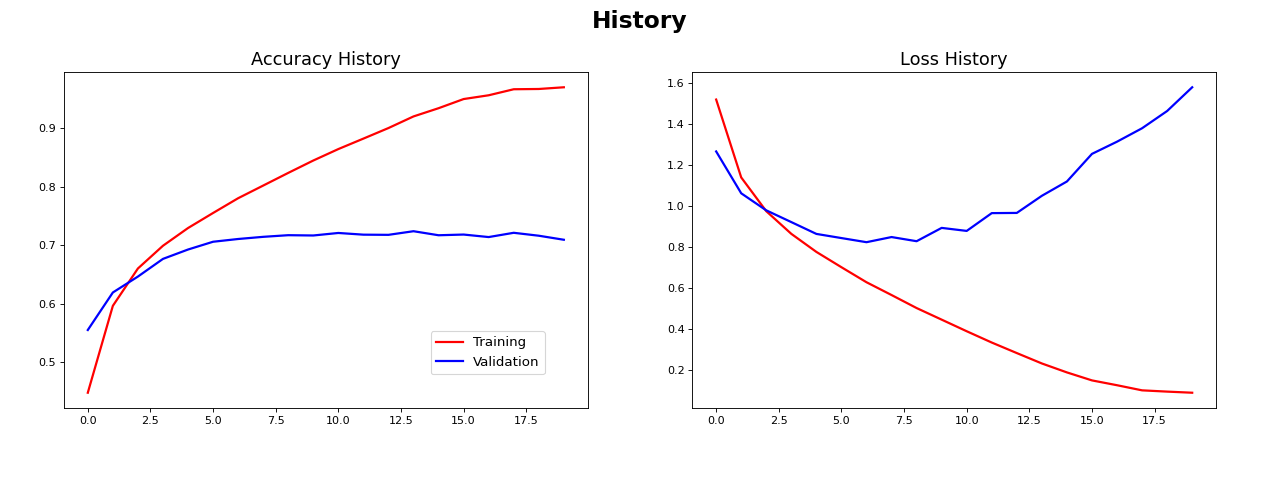
비교 결과
- 모델 구성방법만 바뀐 것이기 때문에 evaluate결과와 학습곡선이 3가지 모두 비슷하게 나타남
- Pytorch와의 연계, 복잡한 모델 구성을 위하여 Sub Classing 방식에 익숙해지는 것이 좋을 것 같음
- 간단한 합성곱 신경망은 다층퍼셉트론과 성능상 차이가 없어 보임
전이학습 (Transfer Learning)
- 전이학습(Transfer Learning)이란 기존에 사전학습된(pre trained) 모델을 가져와 사용하고자 하는 학습 데이터를 최소학습시켜(Fine-tuning) 이용하는 방법
- 대표적인 전이학습 모델인 VGG16, MobileNetV2, ResNet50V2을 비교해 보자
전이학습 : VGG16
class VGG16_model(Model):
def __init__(self, classes):
super(VGG16_model, self).__init__(name='VGG_Model')
self.vgg = VGG16(weights='imagenet', include_top=False)
for layer in self.vgg.layers:
layer.trainable = False
self.flat = Flatten()
self.dense1 = Dense(128, activation='relu')
self.dense2 = Dense(64, activation='relu')
self.dense3 = Dense(classes, activation='softmax')
def call(self, inputs):
x = self.vgg(inputs)
x = self.flat(x)
x = self.dense1(x)
x = self.dense2(x)
outputs = self.dense3(x)
return outputs
CONFIG['model'] = VGG16_model(len(CONFIG['label_names']))
CONFIG['model'].build(CONFIG['shape'])
print(CONFIG['model'].summary())
Model: "VGG_Model"
_________________________________________________________________
Layer (type) Output Shape Param #
=================================================================
vgg16 (Functional) (None, None, None, 512) 14714688
flatten_6 (Flatten) multiple 0
dense_12 (Dense) multiple 65664
dense_13 (Dense) multiple 8256
dense_14 (Dense) multiple 650
=================================================================
Total params: 14,789,258
Trainable params: 74,570
Non-trainable params: 14,714,688
_________________________________________________________________
CONFIG['model'].compile(optimizer=CONFIG['optimizer'],
loss=CONFIG['loss'],
metrics=CONFIG['metrics'])
CONFIG['history'] = CONFIG['model'].fit(X_train, y_train,
batch_size=CONFIG['batch_size'],
validation_data=(X_val, y_val),
epochs=CONFIG['epochs'])
CONFIG['model'].evaluate(X_test, y_test)
# loss: 1.1999 - accuracy: 0.6037
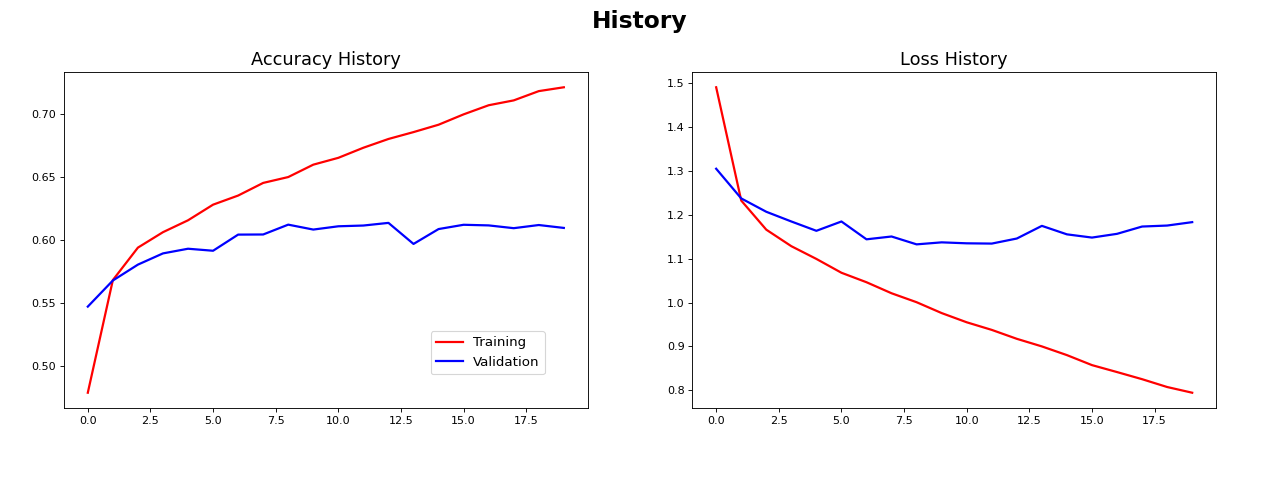
전이학습 : MobileNetV2
class MobileNet_model(Model):
def __init__(self, classes):
super(MobileNet_model, self).__init__(name='MobileNet_Model')
self.mobilenet = MobileNetV2(weights='imagenet'
, include_top=False)
for layer in self.mobilenet.layers:
layer.trainable = False
self.flat = Flatten()
self.dense1 = Dense(128, activation='relu')
self.dense2 = Dense(64, activation='relu')
self.dense3 = Dense(classes, activation='softmax')
def call(self, inputs):
x = self.mobilenet(inputs)
x = self.flat(x)
x = self.dense1(x)
x = self.dense2(x)
outputs = self.dense3(x)
return outputs
CONFIG['model'] = MobileNet_model(len(CONFIG['label_names']))
CONFIG['model'].build(CONFIG['shape'])
print(CONFIG['model'].summary())
Model: "MobileNet_Model"
_________________________________________________________________
Layer (type) Output Shape Param #
=================================================================
mobilenetv2_1.00_224 (Funct (None, None, None, 1280) 2257984
ional)
flatten_9 (Flatten) multiple 0
dense_21 (Dense) multiple 163968
dense_22 (Dense) multiple 8256
dense_23 (Dense) multiple 650
=================================================================
Total params: 2,430,858
Trainable params: 172,874
Non-trainable params: 2,257,984
_________________________________________________________________
CONFIG['model'].compile(optimizer=CONFIG['optimizer'],
loss=CONFIG['loss'],
metrics=CONFIG['metrics'])
CONFIG['history'] = CONFIG['model'].fit(X_train, y_train,
batch_size=CONFIG['batch_size'],
validation_data=(X_val, y_val),
epochs=CONFIG['epochs'])
CONFIG['model'].evaluate(X_test, y_test)
# loss: 1.8455 - accuracy: 0.3470

전이학습 : ResNet50V2
class ResNet_model(Model):
def __init__(self, classes):
super(ResNet_model, self).__init__(name='ResNet_Model')
self.resnet = ResNet50V2(weights='imagenet'
, include_top=False
, input_shape=(32, 32, 3))
for layer in self.resnet.layers:
layer.trainable = False
self.flat = Flatten()
self.dense1 = Dense(128, activation='relu')
self.dense2 = Dense(64, activation='relu')
self.dense3 = Dense(classes, activation='softmax')
def call(self, inputs):
x = self.resnet(inputs)
x = self.flat(x)
x = self.dense1(x)
x = self.dense2(x)
outputs = self.dense3(x)
return outputs
CONFIG['model'] = ResNet_model(len(CONFIG['label_names']))
CONFIG['model'].build(CONFIG['shape'])
print(CONFIG['model'].summary())
Model: "ResNet_Model"
_________________________________________________________________
Layer (type) Output Shape Param #
=================================================================
resnet50v2 (Functional) (None, 1, 1, 2048) 23564800
flatten_10 (Flatten) multiple 0
dense_24 (Dense) multiple 262272
dense_25 (Dense) multiple 8256
dense_26 (Dense) multiple 650
=================================================================
Total params: 23,835,978
Trainable params: 271,178
Non-trainable params: 23,564,800
_________________________________________________________________
CONFIG['model'].compile(optimizer=CONFIG['optimizer'],
loss=CONFIG['loss'],
metrics=CONFIG['metrics'])
CONFIG['history'] = CONFIG['model'].fit(X_train, y_train,
batch_size=CONFIG['batch_size'],
validation_data=(X_val, y_val),
epochs=CONFIG['epochs'])
CONFIG['model'].evaluate(X_test, y_test)
# loss: 2.8342 - accuracy: 0.3629
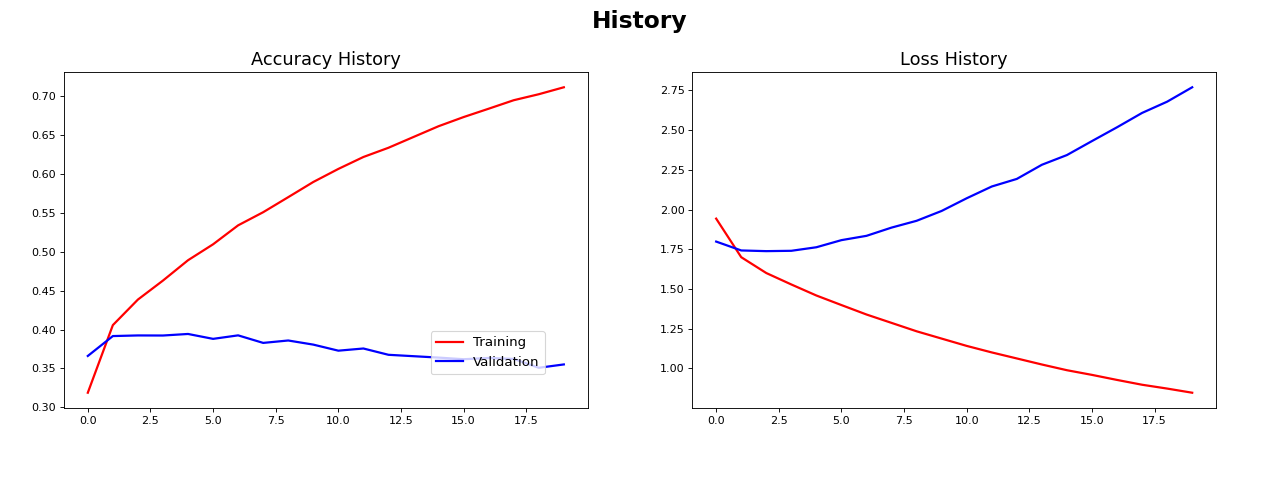
3가지 전이학습 모델, VGG16, MobileNetV2, ResNet50V2들의 비교 결과
- VGG16은 좋은 성능이 나왔지만 MobileNetV2, ResNet50V2은 성능이 떨어졌음
- 과제에 따라서 적절한 전이학습 모델이 있음
- 단지 전이학습 모델을 사용하는 것이 높은 성능을 보장하는 것이 아님
- 전이학습 모델에 따른 적절한 튜닝이 있어야 높은 성능을 기대 할 수 있음

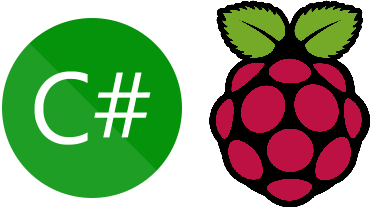

댓글남기기